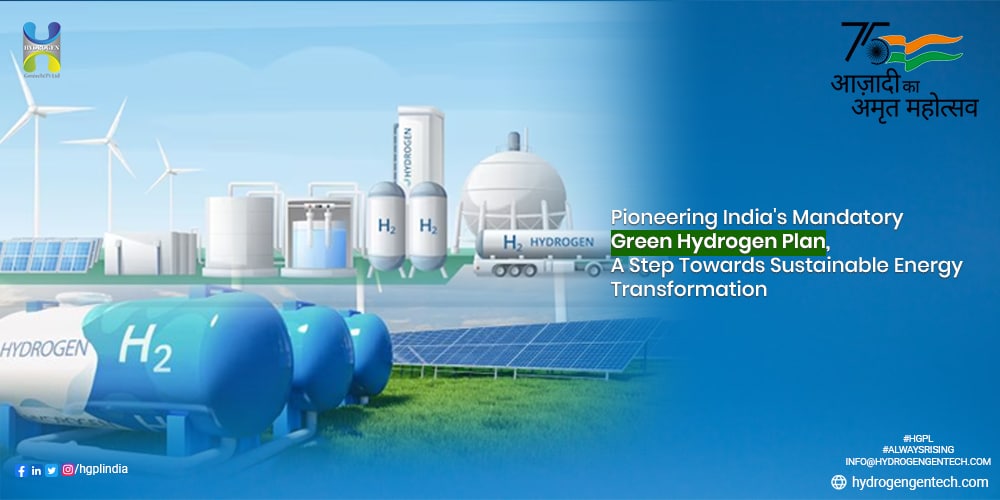
Introduction
In a significant stride towards achieving a sustainable energy future, India is poised to introduce a groundbreaking mandatory green hydrogen plan. As the world grapples with climate change and the urgent need to reduce carbon emissions, green hydrogen emerges as a potent solution. This technical blog delves into the details of India’s forthcoming mandatory green hydrogen plan, its potential implications for the energy sector, and its role in shaping a cleaner and greener future.
The Imperative of Green Hydrogen
Green hydrogen, produced through the electrolysis of water using renewable energy sources, is gaining traction as a clean and sustainable alternative to conventional fossil fuels. With no carbon emissions and the potential to be used across various sectors, including transportation, industry, and power generation, green hydrogen offers a pathway to decarbonize the economy and mitigate the impacts of climate change.
The Genesis of the Mandatory Plan
The introduction of a mandatory green hydrogen plan signifies India’s commitment to aligning its energy policies with environmental sustainability. As per reports, the plan is slated for submission to the Cabinet soon, underscoring the urgency and priority that the Indian government places on transitioning to cleaner energy sources.
Key Aspects of the Mandatory Plan
- Regulatory Framework: The mandatory green hydrogen plan is expected to outline a regulatory framework that mandates the integration and utilization of green hydrogen across industries. This framework is likely to encompass production, distribution, and consumption aspects.
- Sectoral Integration: The plan is anticipated to cover a broad spectrum of sectors, including transportation, industry, power generation, and more. By ensuring a comprehensive approach, the plan aims to maximize the impact of green hydrogen adoption.
- Renewable Integration: To ensure a consistent supply of renewable energy for hydrogen production, the plan might include strategies to enhance renewable energy capacity, grid stability, and energy storage solutions.
- Investment Incentives: The plan could offer incentives and subsidies to encourage industries to adopt green hydrogen. These incentives may include tax benefits, grants, and concessional financing to promote green hydrogen projects.
- Technology Development: A crucial aspect of the plan may involve fostering research and development in green hydrogen technologies, including advanced electrolysis methods and storage solutions.
Potential Implications
- Carbon Emission Reduction: The mandatory green hydrogen plan has the potential to significantly reduce carbon emissions across sectors by replacing fossil fuels with clean hydrogen.
- Energy Security: By encouraging the use of green hydrogen, India can enhance its energy security by reducing dependence on imported fossil fuels.
- Industrial Transformation: Industries such as steel, chemicals, and transportation can undergo a transformation by incorporating green hydrogen into their operations.
- Innovation and Job Creation: The plan’s emphasis on research and development can stimulate innovation and create new job opportunities in the clean energy sector.
- Global Leadership: As one of the world’s fastest-growing economies, India’s adoption of a mandatory green hydrogen plan can set an example for other nations striving to transition to cleaner energy sources.
Conclusion
India’s forthcoming mandatory green hydrogen plan marks a pivotal moment in the nation’s journey towards sustainability. By mandating the adoption of green hydrogen across sectors, India is positioning itself as a global leader in the transition to cleaner energy sources. As the plan is poised to be presented to the Cabinet, the world awaits with anticipation, recognizing the potential of this initiative to shape a greener, more resilient, and sustainable future for generations to come.

